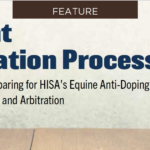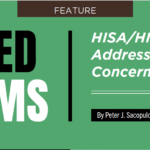Each year hundreds of horses are transported from foreign countries to the United States. Thoroughbreds and quarter horses are shipped to the U.S. to race and sport horses from around the world are brought to the United States for competitions, breeding and sales. In fact, in 2010, approximately 1000 horses were transported from foreign countries and entered the United States to compete in the World Equestrian Games that were held in Lexington, Kentucky.
The rules and regulations governing the admission or denial of horses into the United States are enforced and overseen by the United States Department of Agriculture (USDA) and specifically the Animal and Plant Health Inspection Service (APHIS) , a division of the USDA. The first step in the process of transporting a horse from a foreign nation to the United States is securing the necessary permit. The permit is issued by the USDA and requires extensive information regarding not only the animal but also the owner as well as the purpose for which the animal is entering the United States. The application process to secure the necessary USDA permit often takes three (3) to ten (10) days. As such, shipping of a horse into the United States requires planning.
The second step in the process of transporting a horse to the United States is securing an official veterinarian health certificate (VHC). The VHC must be issued by a full-time licensed veterinary official of the national government of transport origin. The veterinary official must inspect the horse and issue an official VHC stating the following health facts regarding the horse to be transported:
1. The horse has been in the country of origin for sixty (60) days immediately preceding importation. If the horse has not been in the country of origin for sixty (60) days, the horse must be accompanied by a like certificate issued by a full-time salaried veterinary officer of the national government of each country in which the horse has been for the sixty (60) days immediately preceding shipment to the United States;
2. That the horse has been inspected and found to be free of contagious disease and insofar as can be determined exposure thereto during the sixty (60) days immediately preceding exportation;
3. That the horse has not been vaccinated with a live, attenuated, or inactivated vaccine during the fourteen (14) days immediately preceding exportation;
4. That the horse had not been on premises where African horse sickness, dourine, glanders, surra, epizootic lymphangitis, equine piroplasmosis, equine infectious anemia (EIA), contagious equine metritis (CEM), vesicular stomatitis, Venezuelan equine encephalomyelitis (VEE) nor have these diseases occurred on any adjoining premise during the same period of time;
5. That the horse has not been in a country where CME is known to exist, nor has the animal had any contact, breeding or otherwise, with any horse from such a country, for twelve (12) months preceding exportation;
6. That the horse has been inspected and found to be free of ectoparasites.
APHIS has amended its regulations regarding the importation of horses from countries affected with CEM.
“The additional testing added to our existing import regulations will strengthen protections for horses in the United States,” John R. Clifford, deputy administrator for APHIS’ veterinary services program said.
APHIS is taking this action after reviewing probable causes of CEM outbreaks in the United States. Their review identified the need to strengthen testing protocol for horses arriving from CEM-affected countries. To strengthen this protocol, APHIS is requiring additional entry requirements for imported horses of certain ages.
- For yearlings and weanlings, proof must be given that they have not been bred to other horses either through artificial insemination or through live cover.
- Test mares and imported stallions above a certain age are now required to undergo an additional CEM test that will help improve the accuracy of final test results.
This interim rule was published on March 25th in the Federal Register and became effective upon publication.
It is recommended that all required tests be performed and results received prior to transporting the horse. This reduces the possibility of incurring the transportation and related expense only to have the horse denied access upon arriving in the United States.
Although the USDA does not require pre-export blood testing, all horses are tested upon arrival. Therefore, it is recommended that blood samples be sent to a certified USDA laboratory approximately three to four weeks prior to departure to assure negative test results and to facilitate in the port arrival quarantine process.
The third step in this process involves quarantine and testing of the animal upon arrival in the United States. All animals are inspected upon arrival and subject to testing. However, horses arriving in the U.S. from countries that are not recognized by the USDA as being free of VEE or screw worm are required to be quarantined for a minimum of seven (7) days at the port of entry. All horses entering the United States are tested for a series of viruses, infections and diseases including, but not limited to glanders, equine piroplasmosis and EIA.
Prior to or upon securing the necessary permit and VHC, the transporting party must contact a representative of the port of entry and secure an arrival reservation. Horses that are transported from foreign countries to the United States must arrive at one of three official ports of entry. These ports are located in New York, California, and Florida. If, for example, the horse is being shipped to the United States to race in the Kentucky Derby, the owner will be required to secure ground transportation from the port of entry to Churchill Downs in Louisville, Kentucky.
Finally, it is recommended that a foreign national or entity seeking to transport a horse(s) to the United States consult with an experienced reputable transport agency and /or legal counsel to assure regulatory and procedural compliance.
This work is copyrighted and is the exclusive property of the author. It may only be used, in whole or in part, with the express written permission of the author.





